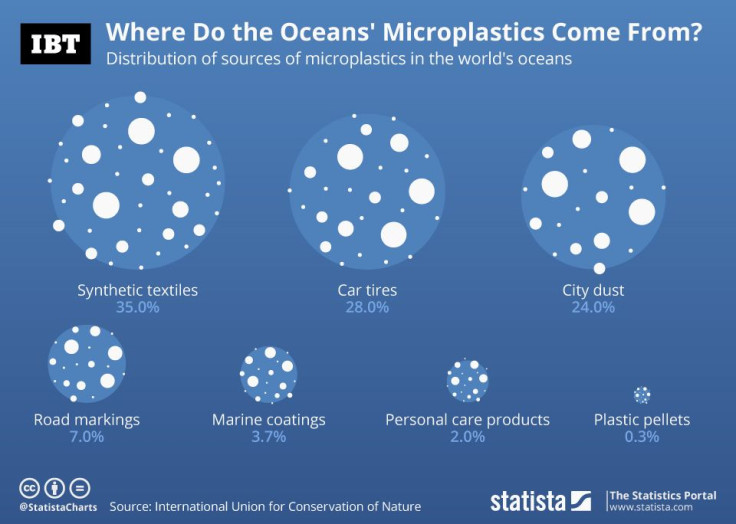In A First, Microplastics Found in Water Trapped In Plant Leaves
KEY POINTS
- Scientists have discovered the presence of microplastics in an unlikely place
- Telmata are small transient water puddles that trap water between leaf axils
- They have a very short-term occurrence of only three to four months
Microplastics are a relatively new addition to the environment, but within a short span, they have come to be found in every ecosystem on Earth. In a first for the scientific community, a team of researchers has found microplastics in water trapped in plant leaf axils.
In a study published in the journal BioRisk, researchers have discovered the presence of microplastics in an unlikely place - teasel plant telmata. They are small transient water puddles that trap water between leaf axils.
Teasels of the genus Dipsacus have leaves that grow opposite each other on the stem at various levels. When these leaves grip the stem, they form cup-like structures that are known as telmata. They have the ability to trap water.
First discovery of microplastics from water trapped on plant leaves @pensoft https://t.co/LML2fzimh0 https://t.co/1IPMSgDq0C
— Phys.org (@physorg_com) September 9, 2022
"Teasel phytotelmata are a relatively common but overlooked aquatic microcosm with a very short-term occurrence of only three to four months," researchers said as reported by PhysOrg.
The finding may exhibit teasel phytotelmata as an indicator of microplastic presence due to their abundance and the theoretical possibility to capture microplastics through different pathways.
Led by Katarína Fogašová, Peter Mank, and Jozef Obona of the University of Prešov, Slovakia, the study originally aimed at studying the organisms present in the water puddles in teasel leaf axils.
What they found instead was far more riveting. They discovered microplastics in the form of fragments and fibers in different colors, with some up to 2.4 mm in length.
"These phytotelmata are very small and have a short lifespan," researchers wrote in their study. "The question is, therefore, how were they polluted with microplastics?"
The answer is not clear, but the researchers posit two plausible explanations. One, the polluted atmosphere may be the source. Two, snails may have brought the microplastics with them from soil or other plants. In the second scenario, microplastics may be present inside the bodies of the snails or on the outside.
"The first finding of microplastics in small short-term water reservoirs created by plants is further evidence that contamination of this kind spreads through various pathways and probably no environment on Earth is safe, which of course makes our discovery quite disheartening," researchers said.
Talking about the relevance of their research, scientists continued, "On the other hand, the results of our research of teasel phytotelmata, as a very unusual and highly specific natural environment, offer many possibilities for use in researching the Spatio-temporal characteristics of the spread of microplastic pollution and its potential impact on the plants themselves, as well as organisms bound to them by ecological relations."
Researchers believe that their study sheds light on the prevalence of microplastics in phytotelmata. At the same time, it is the "first proposal of a new approach to the use of teasel phytotelmata and similar micro-ecosystems provided by plants (or artificially created), as bioindicators of the presence of microplastics in the environment."

© Copyright IBTimes 2024. All rights reserved.





















